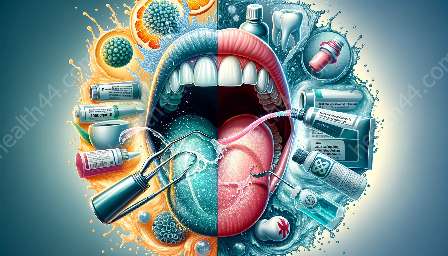Teaching children about mouthwash and dental hygiene is essential for their overall health and well-being. However, this topic can be challenging to present in an engaging and fun way. To address this, we have curated a guide to creative and enjoyable approaches that will help children understand the importance of mouthwash and rinses, while making learning a delightful experience.
Interactive Games and Quizzes
One of the most effective ways to engage children in learning about mouthwash is through interactive games and quizzes. Create fun and educational games that teach the benefits of mouthwash and the proper way to use it. For example, a matching game where children match the benefits of mouthwash with corresponding images can be both informative and entertaining. Additionally, interactive quizzes can be designed to make learning about mouthwash a playful and rewarding experience.
Hands-On Experiments
Children are naturally curious, and hands-on experiments can be an exciting way to teach them about the importance of mouthwash. Consider conducting experiments that demonstrate the effects of mouthwash on eliminating bacteria and promoting oral hygiene. For instance, using disclosing tablets to reveal plaque and then showing children how mouthwash can help remove it can be an engaging and educational activity.
Storytelling and Role-Playing
Storytelling and role-playing can be powerful tools for teaching children about mouthwash in a relatable and enjoyable manner. Create a dental hygiene-themed story that incorporates characters using mouthwash as part of their daily routine. Encourage children to participate in role-playing activities, allowing them to enact scenarios where the characters embrace mouthwash as a positive habit. This approach can help children connect with the concept of using mouthwash in their own lives.
Arts and Crafts Activities
Encourage creativity while teaching children about mouthwash by incorporating arts and crafts activities. Develop projects related to dental hygiene, such as creating colorful posters that highlight the benefits of mouthwash, or designing imaginative toothbrush holders to remind children to use mouthwash regularly. By combining creativity and education, children can have fun while gaining a deeper understanding of mouthwash and its positive impact on oral health.
Interactive Educational Videos
Utilize the power of multimedia by creating interactive educational videos that are specifically tailored to educate children about mouthwash. These videos can feature engaging animations, catchy songs, and relatable characters to convey valuable information about the benefits of mouthwash and how to incorporate it into daily oral care routines. By making learning visually stimulating and entertaining, children are more likely to retain and apply the knowledge they acquire.
Reward Systems and Incentives
Implementing a reward system can motivate children to learn and adopt proper oral hygiene practices, including the use of mouthwash. Create a chart or a virtual tracking system where children can earn rewards or incentives for consistently using mouthwash as part of their daily routine. Positive reinforcement can instill lasting habits and ensure that children view mouthwash as an enjoyable and beneficial aspect of their oral care regimen.
Conclusion
Teaching children about mouthwash and dental hygiene should be a dynamic and captivating experience. By integrating interactive games, hands-on experiments, storytelling, arts and crafts, educational videos, and reward systems, educators and parents can effectively convey the importance of mouthwash in a way that resonates with children. With these creative and fun approaches, children can develop a positive attitude towards mouthwash and understand its role in maintaining a healthy and vibrant smile.









